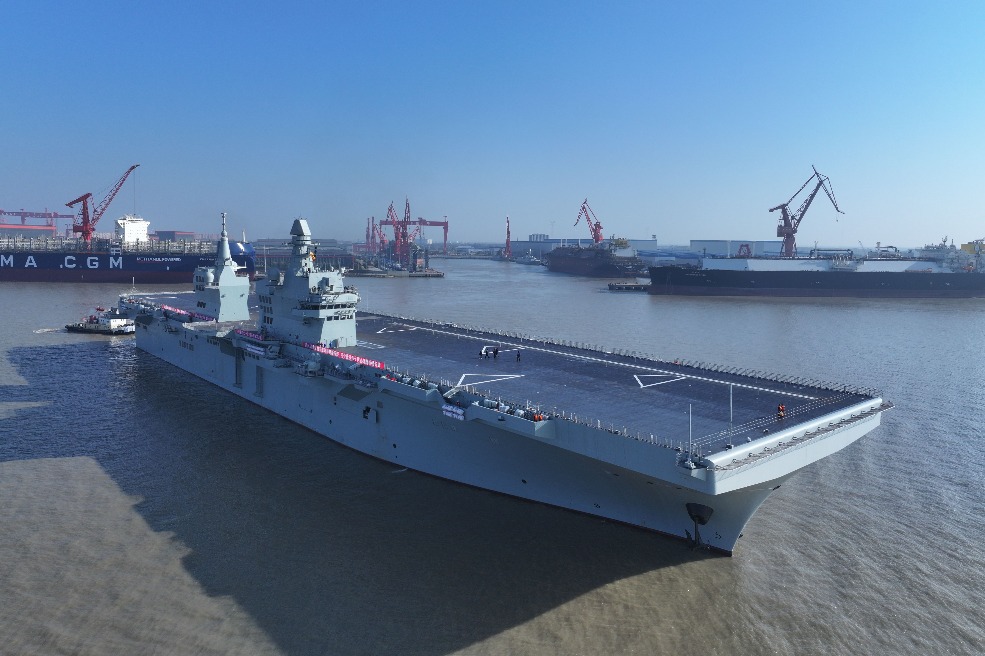Current growth model is unsustainable

China is rife with overinvestment in physical capital, infrastructure and property
Despite the rhetoric of the new Five-Year Plan (2011-2015) - which, like the previous one, aims to increase the share of consumption in gross domestic product (GDP) - the path of least resistance is the status quo.
The details of the new plan reveal continued reliance on investment, including public housing, to support growth, rather than a tax overhaul, substantial fiscal transfers, liberalization of the household registration system or an easing of financial repression.
China has grown on the back of export-led industrialization and a weak currency, which have resulted in high corporate and household savings rates and reliance on net exports and fixed investment (infrastructure, real estate and industrial capacity for import-competing and export sectors) rather than consumption.
When net exports collapsed in 2008-2009 from 11 percent of GDP to 5 percent, China reacted by further increasing the fixed investment share of GDP from 42 percent to 47 percent. Thus, the collapse did not lead to a severe recession - as occurred in Japan, Germany and emerging Asia in 2009 - only because fixed investment exploded. The share of fixed investment has further increased in 2010-2011 to about 50 percent of GDP.
No country can be productive enough to take 50 percent of GDP and reinvest it into new capital stock without eventually facing massive overcapacity and a staggering nonperforming loan problem.
China is rife with overinvestment in physical capital, infrastructure and property. To a visitor, this is evident in brand-new empty airports and bullet trains (which will reduce the need for the 45 planned airports), highways to nowhere, massive new government buildings, ghost towns and brand new aluminum smelters kept closed to prevent global prices from plunging. Commercial and high-end residential investment has been excessive, and auto capacity has outstripped even the recent surge in sales.
While in the short run the investment boom will lead to overheating and inflation - as this growth is resource-intensive - over time the overcapacity will lead to serious deflationary pressures, starting with the manufacturing and real estate sectors.
Eventually, most likely after 2013, China will suffer a hard landing. All historical episodes of excessive investment - including East Asia in the 1990s - have ended with a financial crisis and/or a long period of low growth.
China needs to save less, reduce fixed investment, cut net exports as a share of GDP and boost consumption as a share of GDP.
The trouble is that the reasons the Chinese save so much and consume so little are structural; it will take two decades of reforms to change the incentive to overinvest. Traditional explanations of the high savings rate (lack of a social safety net, limited public services, aging of the population and underdevelopment of consumer finance) are only part of the puzzle.
Chinese consumers in the Chinese mainland do not have a greater propensity to save than Chinese in Hong Kong, Singapore and Taiwan; they all save about 30 percent of disposable income. The big difference is that the share of China's GDP going to the household sector is below 50 percent, leaving little for consumption.
Several Chinese policies have led to a massive transfer of income from households to corporates. A weak currency reduces household income purchasing power by making imports expensive, protecting import-competing State-owned enterprises (SOEs) and boosting the profits of exporters.
Low interest rates on deposits and low lending rates for corporates and developers mean that the massive savings of the household sector receive negative rates of return, while the real cost of borrowing for SOEs is also negative. This creates a huge incentive to overinvest and implies a massive transfer of income from households to SOEs, most of which would be losing money if they had to borrow at market equilibrium interest rates. On top of this, labor repression has caused wages to grow much less than productivity.
To ease this repression of household income, China would need a more rapid appreciation of the exchange rate, a liberalization of interest rates and a much sharper increase in wage growth.
More importantly, China would need to privatize its SOEs so that their profits become income for households and/or massively tax SOEs' profits and then transfer those fiscal resources to the household sector. Instead, on top of household savings, there is another 25 percent of GDP represented by the savings - or retained earnings - of the corporate sector, mostly SOEs.
But boosting the share of income that goes to the household sector could be massively disruptive as it could bankrupt a large number of SOEs, export firms and provincial governments. Instead, in order to boost consumption, China will invest more under the current Five-Year Plan. It will build 36 million low-income housing units rather than launch a serious program of fiscal transfers or reform the household registration system.
Thus, China may face a massive growth slowdown once increasing fixed investment becomes impossible - most likely after 2013. Continuing down the investment-led growth path will exacerbate the visible glut of capacity in manufacturing, real estate and infrastructure. China's policymakers may be able to maintain high growth rates, but this model will show strain in 2013.
The author is professor of economics at New York University's Stern School of Business.
Today's Top News
- Shenzhou XX mission crew returns after debris delays landing
- Japan will 'pay a heavy price' if it dares to interfere in Taiwan Strait by force: Defense Ministry
- Japan will only suffer a crushing defeat should it dare to take a risk: Defense spokesperson
- Tokyo must stop playing with fire: Editorial flash
- China's Shenzhou XX crew en route back to Earth
- China's economy remains generally stable in Oct






























